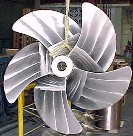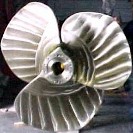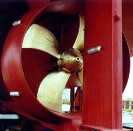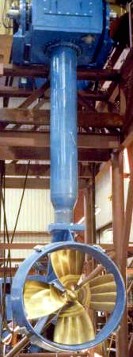|
There are several different kind of propulsion systems as much as applications, a lot of research has been made to try to get the most efficient system in order to lower operation costs (fuel consumption) without sacrificing performance and life of the vessel. Attempts of radical designs have been made without results, but others have succeeded and are becoming popular as the marine field takes the chance to test one of them, anyway, some of the classical designs have slightly changed too and here are a few of the most common:
|
|
These are just some examples of them for the reader to know the advantages of each equipment
All of them have some common applications, these are some of their characteristics
-
The most common due to its relatively low cost is the fixed pitch propeller , these wheels are also known as “constant face pitch”, this means that the pitch on all the surface of the blade (unlike the blade angles) does not change, they are used in most commercial vessels such as tugs, draggers, fishing vessels, trawlers.
-
Variable pitch propellers .- As mentioned, most of the wheels have a constant pitch, but there are some special applications (large vessels or high speed boats) where the necessity of taking out the highest efficiency is a must. On these wheels, pitch may vary on each radius (depending on design), but it is most common to find the ones where pitch is usually reduced near the tip in order to reduce the blade pressure and the possibility of cavitation.
-
Controllable pitch propellers .- These propellers allow the operator to adjust the pitch at will, depending on the operation, this is due to an hydraulic mechanism or a mechanical link that allows the blades to turn on their own axis. They offer a big advantage in operation cost, but they are considerably more expensive than the solid ones.
-
Ducted propellers .- They are surrounded by a hydrodynamic profile shaped shroud, the advantages on these are the increase of thrust (around 40%). There are many profiles that reduce the speed, but there are new improved designs that actually increase it when compared to standard open wheels, there are nozzles designed to operate for maximum performance on the ahead condition and some for both (ahead and astern thrust). The application for these is limited for low-speed boats (operation below 14 knots) such as trawlers, tugs, draggers.
|

Open wheel (skewed design)

Variable pitch propeller

Controllable pitch propeller inside a nozzle

Z-drive unit

Water jet unit
|

